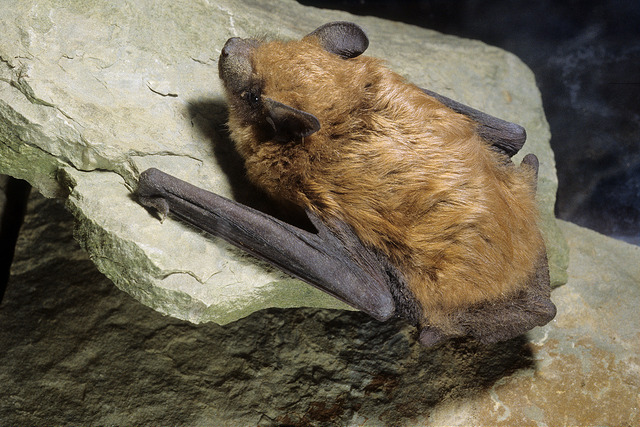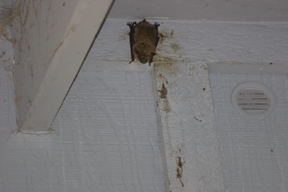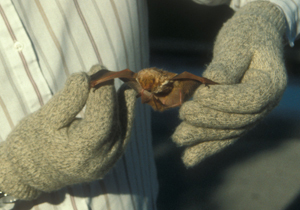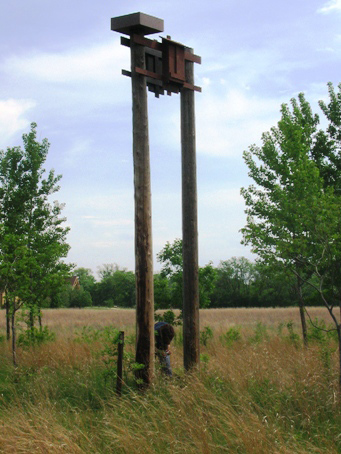Bats are animals that need to be respected for their ecological importance, not feared because of folklore and myths.
Bats have the misfortune of being perceived as demonic and evil creatures. Actually, they are very timid and gentle mammals that will avoid human contact. So save those wooden stakes for supporting your plants because there are no vampire bats in North America.
Also contrary to public belief, bats are not attracted to people's hair, and they are not disease-ridden vermin responsible for massive human health problems. It is true that a low number of bats are associated with rabies and histoplasmosis. However, other common animals such as domesticated animals, skunks, and raccoons have a much higher incidence of rabies. Only large amounts of bat droppings in a confined moist dark location can be considered a viable histoplamosis threat. Bat guano in a natural outdoor setting is just great fertilizer.
Bat Food Sources
All Nebraska bats feed exclusively on insects, devouring more flying insects than birds and bug zappers. Most insect-feeding birds are diurnal, feeding on insects that are active in daylight. Bats have perfected a feeding strategy that targets night-flying insects. Moths and mosquitoes may be their mainstay, yet insects ranging from minute gnats to large flying beetles are eaten.
Bats will consume from 1/4 to 1/2 their body weight in insects each night. This means that an average colony of any common species of bats may eliminate over 100 tons of insects in one season. Several studies conducted in Kansas and Canada over the past few years have shown that bat populations can aid in the control of corn rootworm moths, therefore reducing the need for agricultural insecticide applications in some areas. Just imagine what these creatures can do in your garden!
Lifecycle
Native bats have only one or two young each year, with the young born from May to July. Young bats grow rapidly and are able to fly in three weeks, many taking flight in July. Removal of bat colonies from structures should not begin until after the young are weaned and have begun to fly.
Sometimes adult or young bats may find their way into people's living space. For information on removing occassional bat invaders, refer to Bats, from the Internet Center for Wildlife Damage Management.
Bat houses on tops of poles Creating Bat Habitat
To take advantage of a bat's insect-eating habits, consider making your yard and garden 'bat-friendly.' Bats, like all wild animals, have three basic requirements: water, food, and shelter. Since their food is primarily insects and there are plenty of insects in most gardens, all we need to supply is water and shelter.
Bats need a clean available water source. In the wild, most bats swoop down over the surface of open bodies of water such as lakes, ponds, or slow moving streams. They use the skin between their tail and hind legs as a cup and then drink from it by bending their head under themselves while in flight. Having a garden pond with short plants on opposite sides is an excellent source of water for these animals. Bats also may use raised birdbaths that are located in an open space.
Bats normally live in hollow trees, under loose bark, in caves, and in cracks of rocky ledges. Around structures they may frequent attics, the back side of house shutters, down spouts, and even storm sewers. Consider adding a bat house to your garden decor.
Consult NebGuide G1575, Bat House Construction and Installation.




